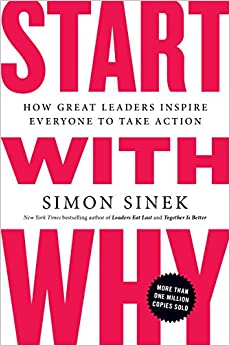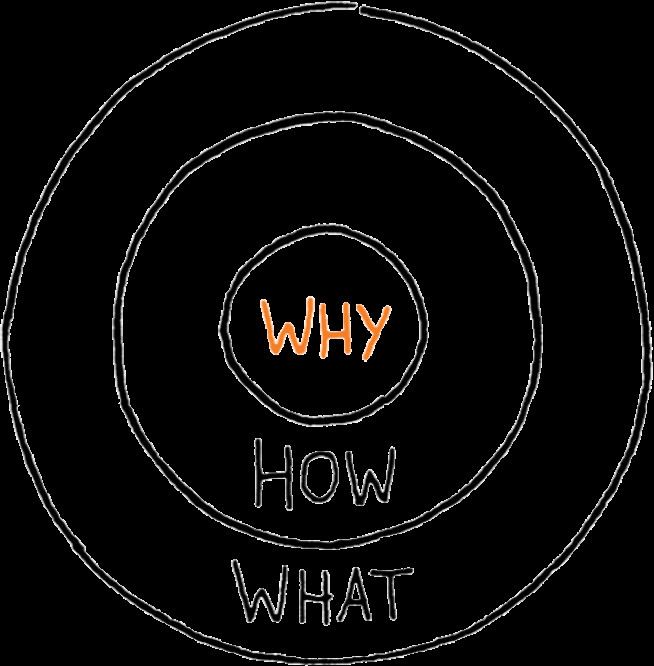Why did you wake up this morning and go to work? Sure the paycheck is one reason, but what if someone offered you a little more, would you jump ship or stick around? Why do your customers buy your product? Maybe that last discount you offered got some new customers in the door, but why should they keep coming back? What motivates the people that report to you to stay loyal and deliver quality work for you as their leader? Simon Sinek answers these questions and more in his book which I reviewed and summarized below. He explores how great leaders inspire action from their teams and their customers.

Book Summary — Start With Why: How Great Leaders Inspire Everyone to Take Action — by Simon Sinek
Who is this book for
If you long for meaning in your professional life then Simon Sinek’s “Start With Why” will get you started in the right direction. It asks us to think about why we do what we do. If you are responsible for managing people and would like insight on how to inspire and lead your team, then this book is for you. If you own a company, or are thinking about starting a business then this book is a must-read. If you are working as an employee and would like to find meaning in your work, then dive in.
Why I loved it
Simon Sinek’s book is one of the most inspiring books I’ve read in a while. There are a lot of books out there on how to inspire your teams but “Start with why” has so many big ideas which one could dedicate full books on and yet Sinek delivers these ideas through easy to understand real-life examples. The ideas put forward in this book made me question the widely accepted practices of the business world.
As someone who has started businesses in the past and has worked as an employee at large and small firms, it put into focus the reasons why I was successful at times and more importantly, why I failed all the other times. This book also shed a lot of light on why managers and business owners across the professional world fail at inspiring their employees and have to turn to carrot and stick measures to get things done.
This book will make you question the status quo and give you a picture of what an inspiring work place could look like.
“People don’t buy what you do, they buy why you do it.” Simon Sinek
THE BIG IDEAS IN THE BOOK

The Golden Circle
The book is based on Sinek’s simple concept of the golden circle which has ‘Why’ at the center, surrounded by ‘How’ which in turn is encircled by ‘What.’ Going from outside in, Sinek discusses how every business knows what they do (product / service they sell), some know how they do it (their unique value proposition) but very few companies know why they do what they do. The ‘why’ is the purpose the company was formed, the reason for its existence and more importantly the reason why anyone (customers, employees & ultimately, the world) should care.
“For great leaders, The Golden Circle is in balance. They are in pursuit of WHY… they hold themselves accountable to HOW they do it and WHAT they do serves as the tangible proof of what they believe.”— Simon Sinek
Truly inspiring companies start with the ‘why’ and everything they do is inspired from that. As an example Apple exists to challenge the status quo and they do this by building products that disrupt the industries they challenge. Apple’s iPod & iTunes challenged the music industry. The iPhone disrupted the communications industry. We don’t question why a computer company is making a phone because they didn’t just make a phone they challenged the cell phone industry to think beyond the horizon.
Simon’s TED talk is one of the most watched TED talks of all time with over 36 million views and the reason is simple; as social animals, we resonate with people, products and services that match our sense of self. We buy things that project to the world who we are and so companies that start with why speak to us and as a result these firms have a die-hard customer base.

Building a Cathedral — Inspiration vs Manipulation
Great companies start with ‘why’ and this north star provides a sense of purpose to their employees. Using the ‘why’ as their guide the employees find deeper meaning in the work they do which is a more powerful motivator than money or fear of losing their job. To illustrate this point Simon uses the following parable:
Consider the story of two stonemasons. You walk up to the first stonemason and ask, “Do you like your job?” He looks up at you and replies, “I’ve been building this wall for as long as I can remember. The work is monotonous. I work in the scorching hot sun all day. The stones are heavy and lifting them day after day can be backbreaking. I’m not even sure if this project will be completed in my lifetime. But it’s a job. It pays the bills.” You thank him for his time and walk on.
About thirty feet away, you walk up to a second stonemason. You ask him the same question, “Do you like your job?” He looks up and replies, “I love my job. I’m building a cathedral. Sure, I’ve been working on this wall for as long as I can remember, and yes, the work is sometimes monotonous. I work in the scorching hot sun all day. The stones are heavy and lifting them day after day can be backbreaking. I’m not even sure if this project will be completed in my lifetime. But I’m building a cathedral.”
In the above parable the only difference between the two men is that one has a sense of purpose, he understands the ‘why’ behind his work and feels he’s working for something bigger than the job itself. Employees that have a sense of purpose naturally transmit their enthusiasm to the customers which results in a better customer experience which in turn results in more sales.
Communicating the bigger purpose behind a company in it’s marketing can result in unparalleled customer loyalty. Sinek writes about the types of manipulations companies have to resort to, in order to get new customers and to get these customers to come back. The typical types of manipulations used in the business world are fear, peer pressure, aspiration, novelty, price & promotions. While these tactics can generate sales and might help the company grow, it does not result in brand loyalty.

Another important insight Sinek touches on is understanding the law of diffusion of innovation which Malcolm Gladwell popularized in The Tipping Point (the book that was the tipping point for Gladwell himself). The basic idea is that any product or service that needs to reach the masses must be adopted by innovators and the early adapters before breaking out of the ‘chasm’ and reaching the tipping point. Simon’s insight in this is that to reach the innovators and early adapters businesses must understand and use their ‘why’ in their marketing. As an example Simon talks about the company Harley Davidson which now represents such a clear set of beliefs that rational people tattoo their corporate logo onto their skin and sometimes even if they don’t own a Harley. Their definition of why they exist is so strong that the brand now represents a lifestyle instead of a product.
Leadership & Trust
“Every company, organization or group with the ability to inspire starts with a person or small group of people who were inspired to do something bigger than themselves.” — Simon Sinek
Sinek believes that great leaders are those that people choose to follow not those that ask people to follow them. In order for someone to decide they will follow someone, a bond of trust must be present. Trust is earned through shared values and beliefs and by knowing that the leader is working for something bigger than themselves and not for self-gain. Leadership and trust are intrinsically dependent on each other; you simply can’t have one without the other. In the book Sinek writes about Southwest Airlines and their (heretical) belief that the company must take care of their employees first. Happy employees will keep customers happy who in turn will make shareholders happy.
For a company that starts with ‘why’ challenges arise with success. With success the company should perform what Simon calls ‘the bus test.’ If the founder or the leader gets hit by the bus and dies, will the vision, the belief and the cause stay alive? Has the company embedded the culture such that the ‘why’ stays alive beyond the founder. Many companies faced this challenge and failed. Examples include Microsoft after Bill Gates left, Starbucks after Howard Schultz left & WalMart after Sam Walton passed away. The challenge all these companies had after the founders left is that they began chasing arbitrary goals like increasing top-line revenue and growth etc and their How and What was not aligned with their ‘Why’ anymore.
CONCLUSION
Buy this book. Watch Simon Sinek’s TED talk and then sit down and define your ‘why.’ Why do you do what you do? Why should anyone care? What impact do you want to make in the world and how will you do it?
If you run an organization or a team how are you inspiring them? Why should they come to work everyday and give their all? Working for a paycheck is shown to be un-inspiring by many studies, as are other ‘incentives’ touted by many firms. Once the initial high of a raise or a bonus is gone what will keep that employee engaged and inspired?
Find the ‘why’ for your team, organization or company. Give them a purpose, then give them the tools to succeed and finally give them the autonomy and trust to deliver quality work.
